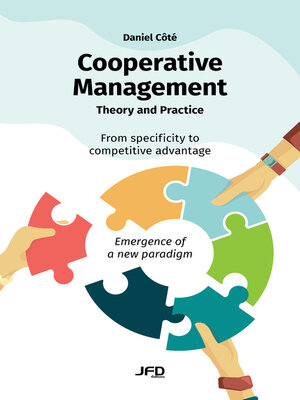
Sign up to save your library
With an OverDrive account, you can save your favorite libraries for at-a-glance information about availability. Find out more about OverDrive accounts.
Find this title in Libby, the library reading app by OverDrive.



Search for a digital library with this title
Title found at these libraries:
| Library Name | Distance |
|---|---|
| Loading... |
During the last two decades, companies were (and still are) looking for new sources of efficiency, while most industries have reached stages of maturity and saturation. Moreover, internationally available information and communication systems, at near-zero transaction costs, are leading to intensified interactions between customers, and between customers and firms. As for cooperatives, they are experiencing not only the impacts of market transformation, but also pressure on the relevance of their own identity.
In this book, two theoretical models are developed: a new cooperative paradigm (NPC), and a cooperative equilibrium model. The combination of these two models highlights the potential competitive advantages of the cooperative organization in response to the transformations mentioned.
In relation to the NPC, the strategies selected are: (1) value congruence, (2) psychological ownership, (3) loyalty and customer engagement, and (4) value co-creation. For each of these strategies, three key questions are addressed. First, what are the competitive advantages associated with them, regardless of the organizational form? Second, how do the foundations of the cooperative distinction converge with the essential parameters to be mastered to design, implement and operationalize these strategies? Finally, what are the unique sustainable competitive advantages of a cooperative organization relative to these same strategies?
Furthermore, for the logic of action specific to the cooperative management method to be expressed, the cooperative values, principles and rules must be articulated in an appropriate management framework. This is what the cooperative balance model proposes.
The last key idea introduced in this book concerns the denaturalizing tendency observed among many cooperatives, which leads to an identity crisis. The two theoretical models cited are highly relevant to the challenges resulting from this denaturalizing tendency.
The three models introduced constitute the first part of this book. The second part offers a practical perspective while several cases of cooperatives are included.
http://coopmanagement.ca







